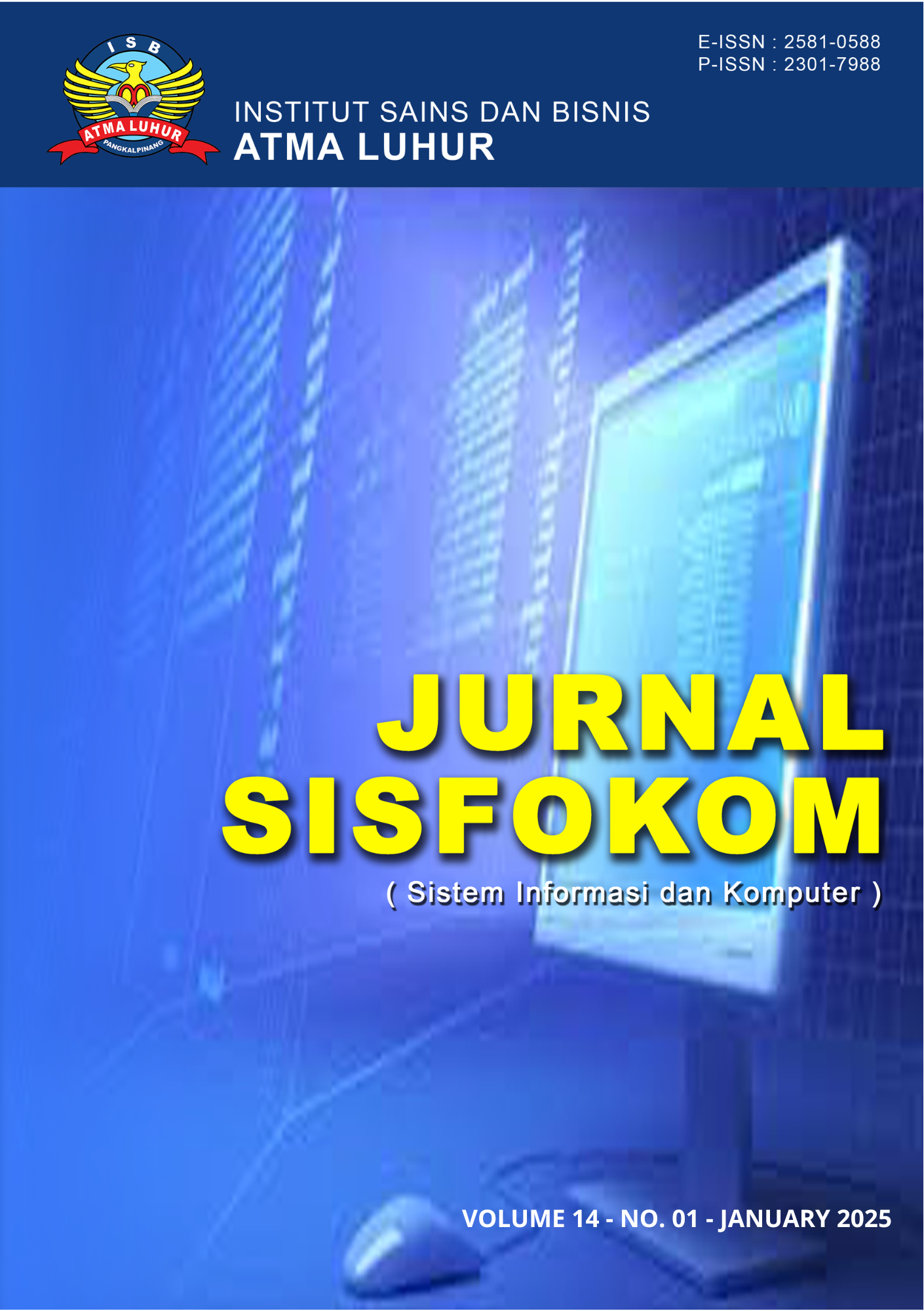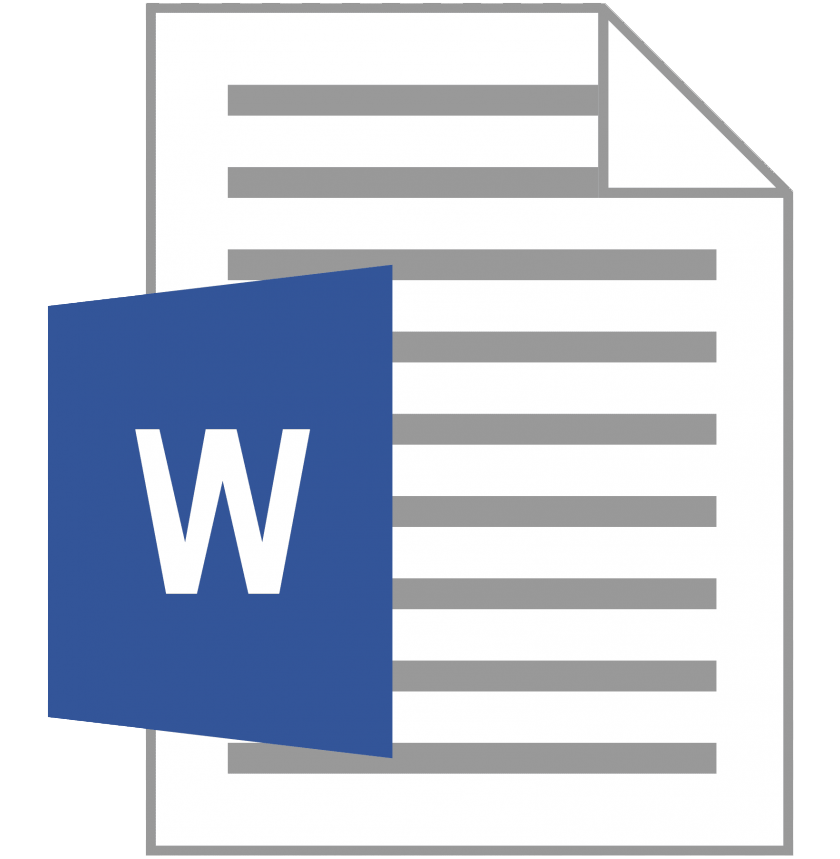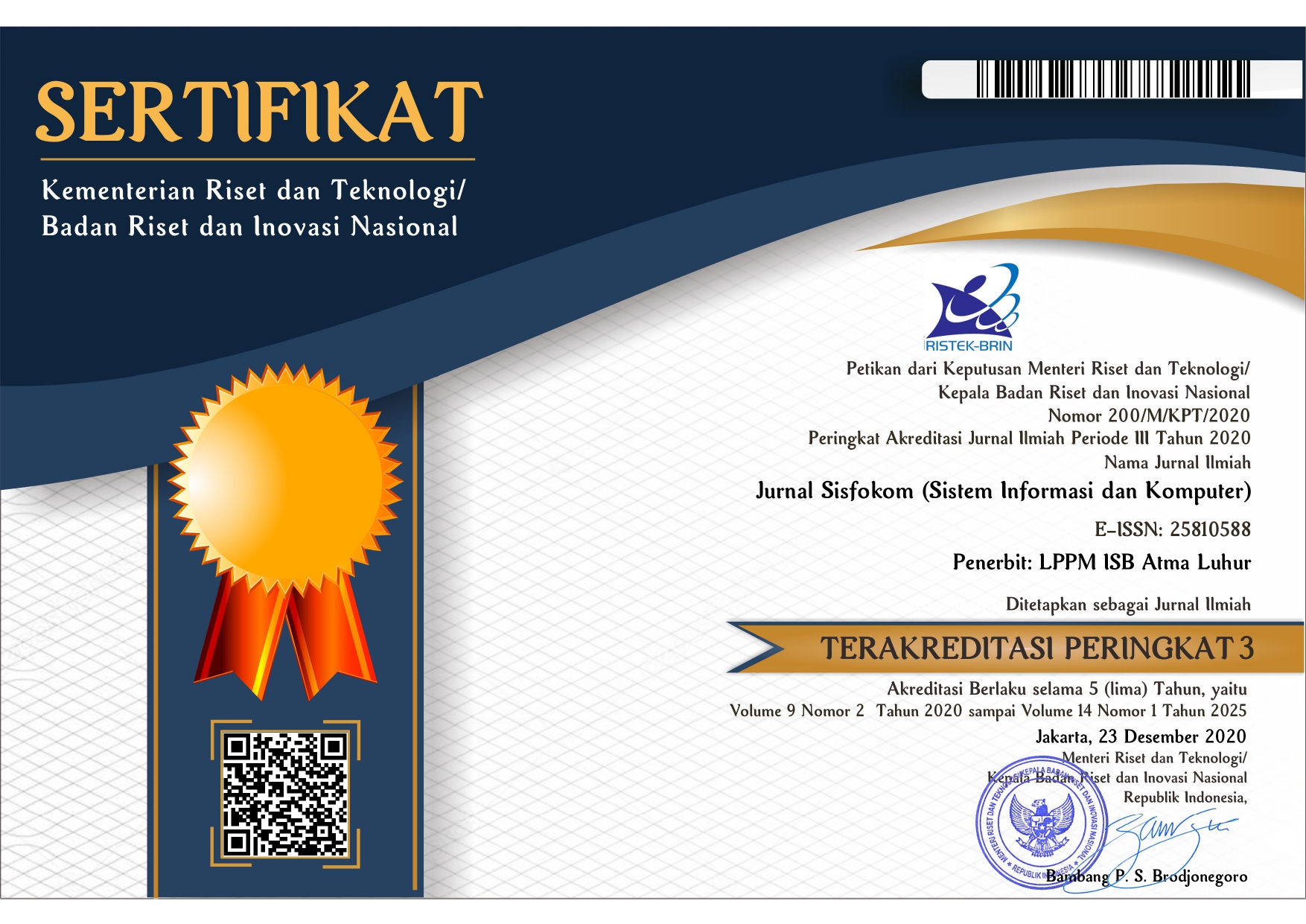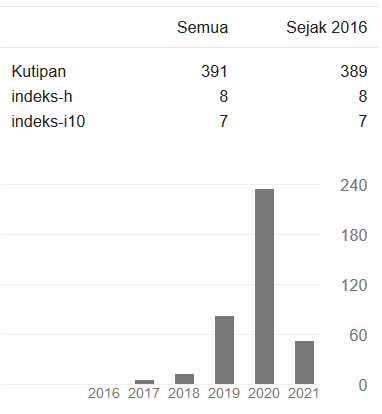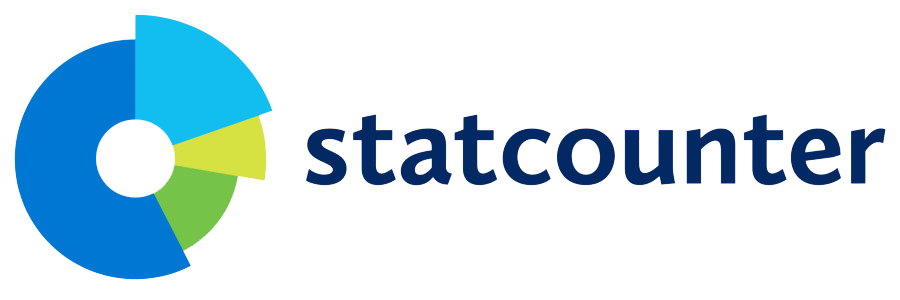Prediction of Claim Fund Reserves in Insurance Companies Using the ARIMA Method
DOI:
https://doi.org/10.32736/sisfokom.v14i1.2331Abstract
Insurance is a financial protection contract between a customer and an insurance company which is stated in the form of an insurance policy. Prediction of insurance claim reserve funds is necessary because the claim amount varies and the claim time can be the same. If at any time there is a claim that is so large that it exceeds the available claim reserve fund plus the claim occurs at the same time, it can cause the company to fail to pay the claim. This will certainly make the company's conduct decline, customer trust will be lost, and can cause the company to go bankrupt. The problem can be solved if the insurance company has sufficient claim fund reserves. Claim fund reserves are an important issue in insurance companies. This study aims to predict the claim fund reserves in insurance companies to anticipate varying claim amounts. Historical analysis of the value of claims with the ARIMA model approach is used to predict future claim values. We use claim value data that has been scaled in millions. 2020 to 2022 as training data and 2023 as test data. The Root Mean Square Error (RMSE) metric obtained is IDR 25,780.71; Mean Absolute Deviation (MAD) of IDR 14,421.89, and Mean Absolute Percentage Error (MAPE) of IDR 5,967.27; while the total actual claim value in 2023 is IDR 161,700.51 and the total predicted claim value is IDR 166,227.36; which means that an accuracy of 97% is obtained. The result of claim prediction value in one periodic year can give a favor to the management to make a decision, how much the claim funds should be prepared.References
A. W. Avrizal and E. Junianto, “Prediksi Kebangkrutan Perusahaan Menggunakan Algoritma Decision Tree Berbasis Teknik Resampling,” eProsiding Tek. Inform., vol. 4, no. 1, pp. 101–109, 2023, [Online]. Available: https://eprosiding.ars.ac.id/index.php/pti/article/view/919/403.
H. Saleh, “Prediksi Kebangkrutan Perusahaan Menggunakan Algoritma C4.5 Berbasis Forward Selection,” Ilk. J. Ilm., vol. 9, no. 2, pp. 173–180, 2017, doi: 10.33096/ilkom.v9i2.97.173-180.
S. Bahri and N. Widyawati, “Analisis Prediksi Kabangkrutan Pada Perusahaan Yang Di- Delisting Di BEI,” J. Ilmu dan Ris. Manaj., vol. 4, no. 8, pp. 3–22, 2015, [Online]. Available: http://journal.stieputrabangsa.ac.id/index.php/jimmba/index.
R. A. Nurdini, Y. Priyadi, and . N., “Analisis Prediksi Kebangkrutan Perusahaan Menggunakan Artificial Neural Network Pada Sektor Pertambangan Batubara,” J. Sist. Inf. Bisnis, vol. 8, no. 1, p. 107, 2018, doi: 10.21456/vol8iss1pp107-114.
Y. Hikmah and I. R. Hikmah, “Perhitungan Cadangan Klaim Dengan Metode Chain Ladder Menggunakan Excel Dan Rstudio,” MAp (Mathematics Appl. J., vol. 4, no. 2, pp. 122–131, 2022, doi: 10.15548/map.v4i2.4837.
D. M. Putri and Aghsilni, “Estimasi Model Terbaik Untuk Peramalan Harga Saham PT. Polychem Indonesia Tbk Dengan Arima,” MAp J., vol.1, no. 1, pp. 1–12, 2019.
M. Jia, H. Xu, and S. Zhang, Comparison Analysis of ARIMA and Machine Learning Methods for Predicting Trend of US Semiconductor Stocks, vol. 1. Atlantis Press International BV, 2022.
M. S. Fahmuddin and S. M. Sri Mustika, “Perbandingan Metode ARIMA dan Single Exponential Smoothing dalam Peramalan Nilai Ekspor Kakao Indonesia,” VARIANSI J. Stat. Its Appl. Teach. Res., vol. 5, no. 3, pp. 163– 176, 2023, doi: 10.35580/variansiunm193.
E. Munarsih and I. Saluza, “Comparison of exponential smoothing method and autoregressive integrated moving average (ARIMA) method in predicting dengue fever cases in the city of Palembang,” J. Phys. Conf. Ser., vol. 1521, no. 3, 2020, doi: 10.1088/1742-6596/1521/3/032100.
X. Zhang, Q. Zhou, S. Weng, and H. Zhang, “ARIMA Model-Based Fire Rescue Prediction,” Sci. Program., vol. 2021, 2021, doi: 10.1155/2021/3212138.
S. Macdonald and N. Headlam, Research methods handbook : introductory guide to research methods for social research. 2008.
G. E. P. Box, G. M. Jenkins, G. C. Reinsel, and G. M. Ljung, Time series analysis: forecasting and control. John Wiley and Sons Inc., 2015.
Downloads
Published
Issue
Section
License

This work is licensed under a Creative Commons Attribution 4.0 International License.
The copyright of the article that accepted for publication shall be assigned to Jurnal Sisfokom (Sistem Informasi dan Komputer) and LPPM ISB Atma Luhur as the publisher of the journal. Copyright includes the right to reproduce and deliver the article in all form and media, including reprints, photographs, microfilms, and any other similar reproductions, as well as translations.
Jurnal Sisfokom (Sistem Informasi dan Komputer), LPPM ISB Atma Luhur, and the Editors make every effort to ensure that no wrong or misleading data, opinions or statements be published in the journal. In any way, the contents of the articles and advertisements published in Jurnal Sisfokom (Sistem Informasi dan Komputer) are the sole and exclusive responsibility of their respective authors.
Jurnal Sisfokom (Sistem Informasi dan Komputer) has full publishing rights to the published articles. Authors are allowed to distribute articles that have been published by sharing the link or DOI of the article. Authors are allowed to use their articles for legal purposes deemed necessary without the written permission of the journal with the initial publication notification from the Jurnal Sisfokom (Sistem Informasi dan Komputer).
The Copyright Transfer Form can be downloaded [Copyright Transfer Form Jurnal Sisfokom (Sistem Informasi dan Komputer).
This agreement is to be signed by at least one of the authors who have obtained the assent of the co-author(s). After submission of this agreement signed by the corresponding author, changes of authorship or in the order of the authors listed will not be accepted. The copyright form should be signed originally, and send it to the Editorial in the form of scanned document to sisfokom@atmaluhur.ac.id.

